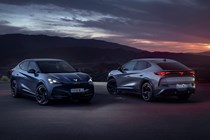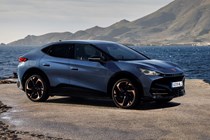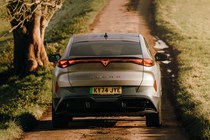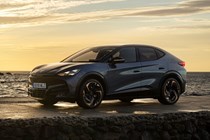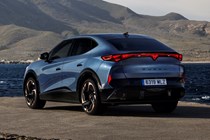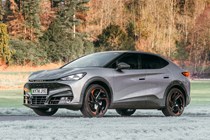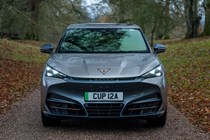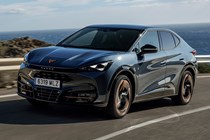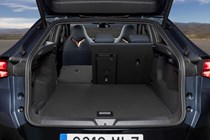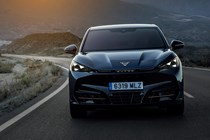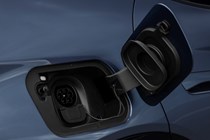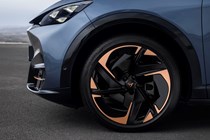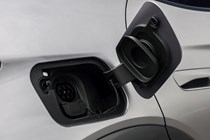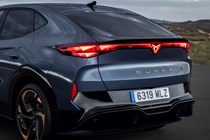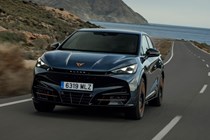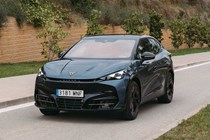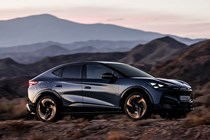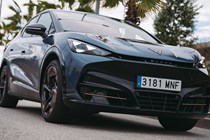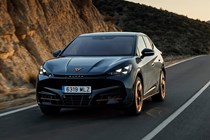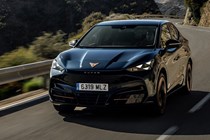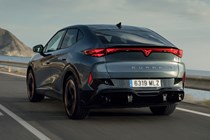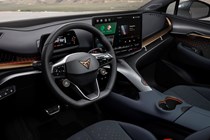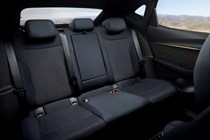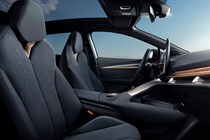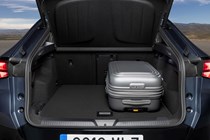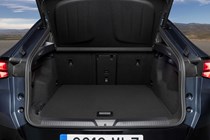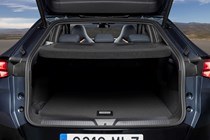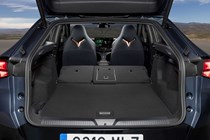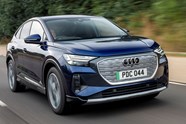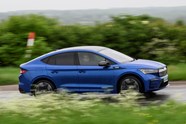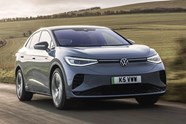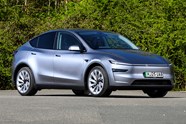
Cupra Tavascan review
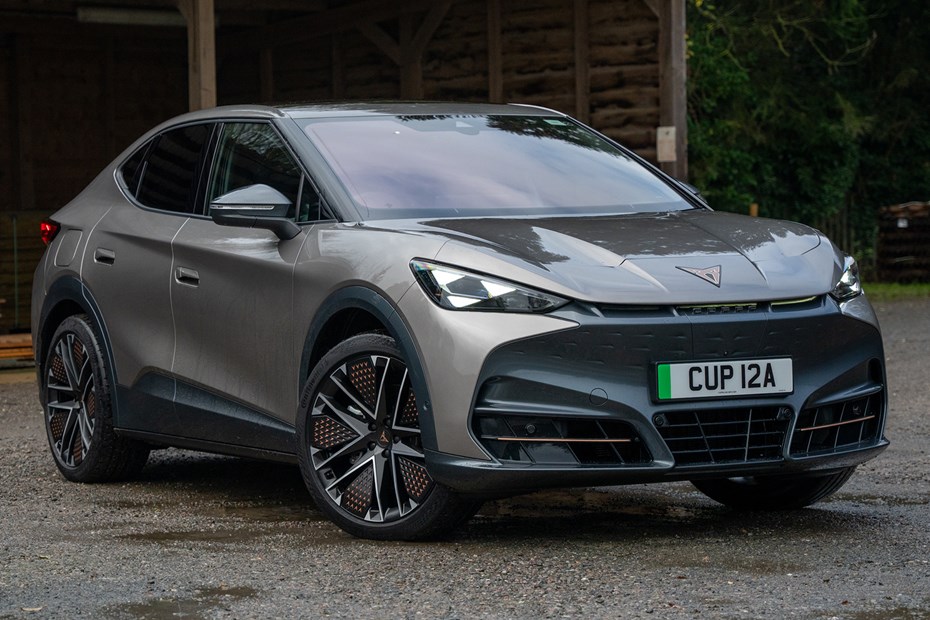
At a glance
| Price new | £47,350 - £62,180 |
|---|---|
| Used prices | £31,892 - £45,430 |
| Road tax cost | £620 |
| Insurance group | 34 - 39 |
Get an insurance quote with

|
|
| Fuel economy | 3.5 - 4.1 miles/kWh |
| Range | 299 - 354 miles |
| Miles per pound | 5.6 - 12.1 |
| Number of doors | 5 |
| View full specs for a specific version | |
Available fuel types
Fully electric
Pros & cons
- Sharp handling (for an EV)
- Bold styling inside and out
- Huge infotainment screen
- Unsettled ride
- Brakes feel awful to use
- Patchy interior quality
Cupra Tavascan SUV rivals
Overview
This one’s been a long time coming. Cupra unveiled the Tavascan electric SUV five whole years ago, but it took until November 2024 before we could sample it in the UK.
Surely it was worth the wait, though? After all, this is the car Cupra reckons will become its biggest volume driver into the next decade – and, as such, it has all the trendiest features new car buyers are hankering for right now.
Coupe-SUV styling? Present and correct. Angular, unusual surfacing? Naturally. A massive touchscreen infotainment system and more driver assistance tech than a commercial airliner? You can bet your last penny.

What Cupra doesn’t want you to know is that, underneath that wild exterior, the Tavascan is mechanically (and electrically) identical to the Volkswagen ID.5 – but you’re paying around £2,000 more for the Cupra badging and copper trim.
So, is it worth it? Or would you be better off opting for one of its many and varied rivals, such as the Ford Capri, Skoda Enyaq Coupe or Tesla Model Y? Scroll down to find out.
What’s it like inside?
It’s… different. But that’s not such a bad thing considering Cupra is supposed to be a disruptor brand that’ll challenge the established car companies. The cabin is remarkably similar to the Tavascan concept we saw back in 2019, sharing the same floating centre console, curvy dashboard and massive infotainment system. It’s interesting to look at.
Sadly, it’s not particularly nice to interact with. The interior plastics are too hard for a car with such premium aspirations and the haptic steering wheel buttons are utterly idiotic, as you’re constantly mis-clicking them when twirling the wheel. Even the lashings of copper – now the signature spice of Cupra’s cabins – doesn’t really help to lift the ambiance.
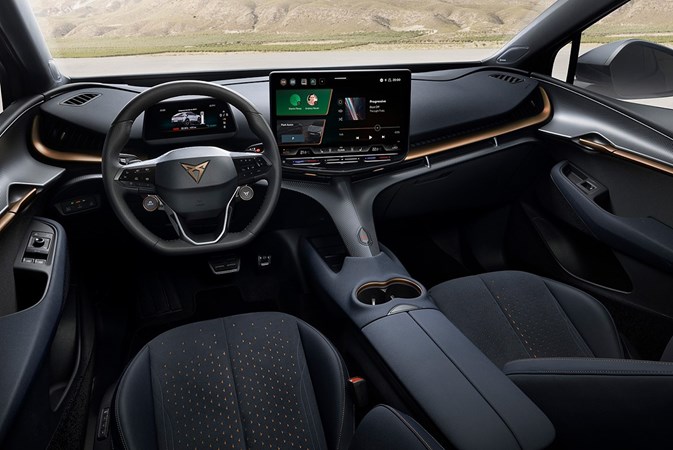
We like the Tavascan’s infotainment system. Or the hardware, at least. It’s the same 15.0-inch screen you get in the Volkswagen ID.7 – and, like that car, it’s sharp and responsive to use. Frustratingly, though, Cupra hasn’t adopted Volkswagen’s excellent menu design.
Cupra’s black and copper theme already looks dated and we’re not happy to have sacrificed the ID.7’s excellent shortcut buttons at the top of the screen that allow you to jump directly to the driver assistance tech, phone menu and drive modes (although this latter niggle is offset by the physical drive mode button on the steering wheel).
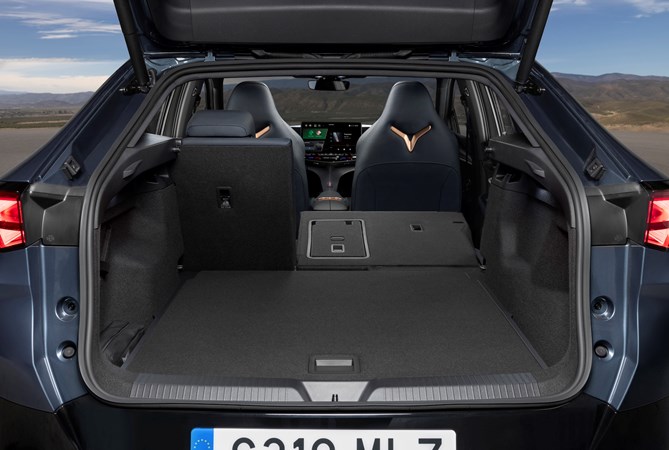
At least it’s practical. There’s a generous amount of legroom in the back and, despite the sloping roofline, headroom is adequate. Plus, Cupra’s panoramic sunroof helps to make the cabin feel a lot airier than it is. Boot space stands at 540 litres, which is eight litres more than the ID.7, but 30 litres behind the Enyaq Coupe.
Cupra Tavascan powertrains
Here’s where Cupra makes a case for the Tavascan’s steeper starting price over the mechanically similar Skoda Enyaq and Volkswagen ID.7. The entry-point to the Tavascan range has a lot more poke than the cheapest versions of its Volkswagen Group stablemates to reflect the company’s positioning as a premium, performance car manufacturer.
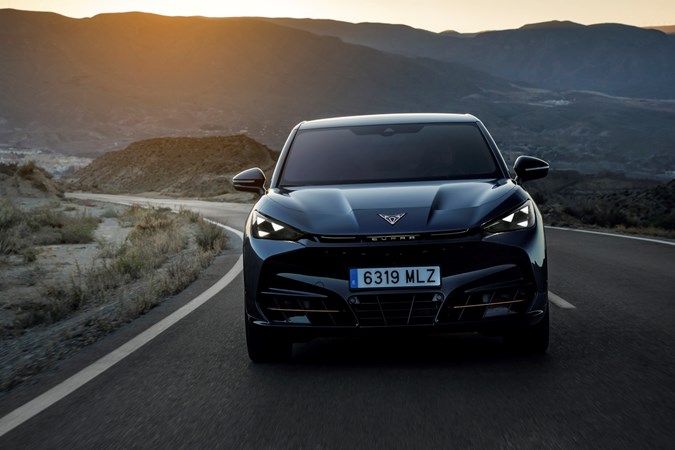
So, rather than making do with the Volkswagen Group’s most basic 52kWh battery pack and 170hp electric motor, the bare bones Tavascan V1 has a 77kWh battery and a 286hp electric motor. Above that, there’s a four-wheel drive option that uses the same battery but an extra motor on the front axle to boost power to 340hp.
What’s it like to drive?
Hit and miss. Cupra’s engineers have fine-tuned the MEB platform’s suspension and steering for improved dynamics and greater feedback. Some of the company’s tweaks have landed better than others, though.
It’s certainly sharper and more interesting to drive than the ID.5, with its stiffer suspension producing less body roll in the corners. In performance-focused VZ trim, you can almost call it engaging, delivering rapid acceleration and plenty of grip thanks to four-wheel drive.
It isn’t particularly comfortable, though. We reckon it’s the firmest version of the MEB platform we’ve yet experienced, especially when you switch the chassis into Cupra mode. It doesn’t have the same compliancy of an ID.4 or even the Ford Capri.
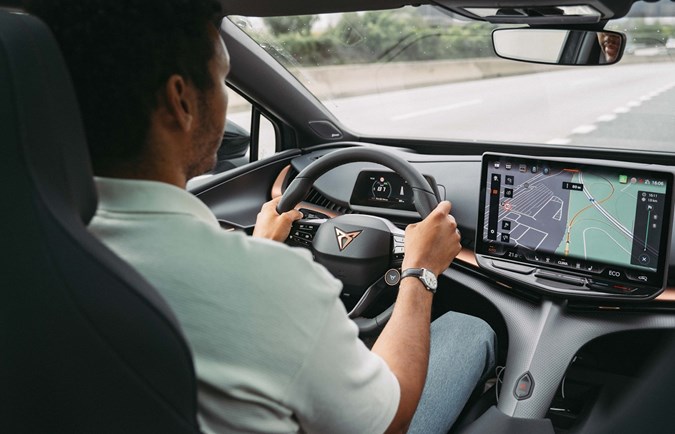
It’s just too stiff at low speeds, jiggling over anything less than a perfectly surfaced road. And that’s rare in the UK. Still, at least it smooths out once you get up to speed.
The brakes leave a lot to be desired, too. There’s nothing wrong with their performance – they’ll stand the Tavascan on its headlights if you need them to – but finding the changeover point between the regenerative brakes and friction brakes is a lottery.
It doesn’t help that the pedal is rock solid at the top of its travel to try and give the illusion that the brake regen system isn’t there. But it is. And it’s irritating whether you’re slowing down for a set of lights while creeping through town or tearing down a twisty country road. We’d much prefer the braking to be more consistent and predictable.
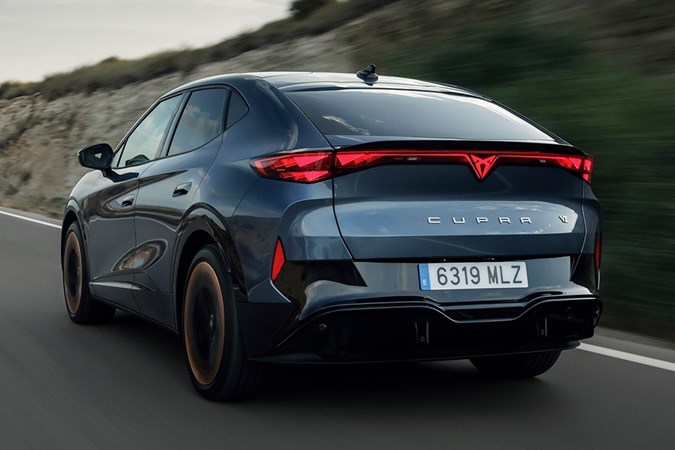
You can’t escape the sheer weight of the Tavascan, either. Even in its lightest trim, it tips the scales at a lardy 2.2 tonnes. Yes, most of that weight comes from the battery, which is concentrated low down in the chassis, so the effect of the inertia isn’t as bad as it could be. But it simply isn’t as agile as the petrol-powered Cupra Formentor.
To be fair to Cupra, the Enyaq and ID.5 weigh about the same – but they’re not supposed to be corner-carving sports SUVs. They’re just family haulers, so the weight matters for those rivals.
Range and charging
The cheapest, rear-wheel drive Tavascan V1 has a maximum driving range of 353 miles, while the more powerful dual-motor VZ1 model has a best-case range of 320 miles. Naturally, those figures won’t be as impressive when the cold weather sets in, but you can improve your lot by specifying Cupra’s optional heat pump in its £1,335 Winter Pack.
We haven’t yet had the chance to conduct a proper range test of the Tavascan, but our experience of the mechanically identical Skoda Enyaq vRS suggests you should get around 280 miles of motorway driving, which is more than adequate. Especially if you can plan your comfort breaks around rapid charging stations.

The Tavascan support 135kW DC rapid charging. The tech can thrash its battery from 10 to 80% capacity in just 28 minutes. That’s not bad, but the Kia EV6 can achieve the same state of charge in just 18 minutes thanks to its support for 350kW DC rapid charging.
What models and trims are available?
There are four versions of the Tavascan to choose from. The cheapest model is badged V1 and comes with a 286hp electric motor, 19-inch alloy wheels, LED headlights, a 15.0-inch infotainment system, a wireless smartphone charger, cruise control and lane-keeping assist. Prices start from £47,340.
Above that, there’s the V2. It gains 21-inch alloy wheels, 12-way adjustable and heated sports seats, Matrix LED headlights, a panoramic sunroof, an upgraded Sennheiser audio system and adaptive dampers. The extra equipment jacks the starting price up to £53,835.
Next up, there’s the VZ1. It gets all the same equipment as the V1, but it’s teamed with Cupra’s more powerful 340hp dual-motor powertrain. Prices start from £55,935.
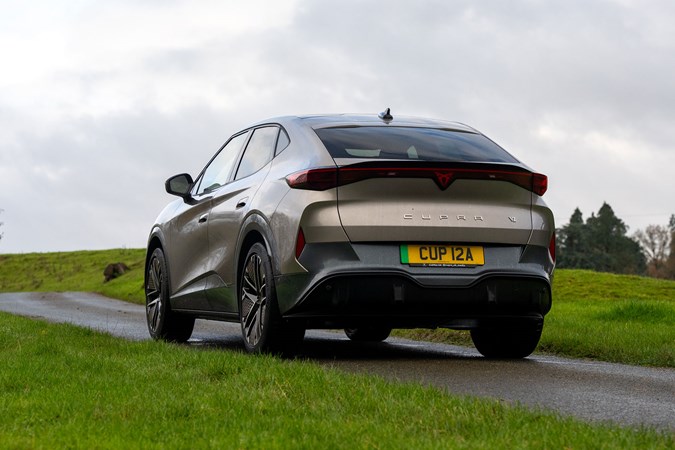
At the top of the Tavascan range is the VZ2. It’s priced from £60,835 – but the improvements over the VZ1 trim are fairly minor. All you get for your extra cash are some ventilated front seats, a different set of 21-inch alloy wheels and some leather upholstery.
We reckon either the V1 or the VZ1 trims are the ones to go for, as they’re both well equipped for what they are. If you need the extra range, opt for the former. If you’re looking for more performance, you’ll be better served by the latter.




